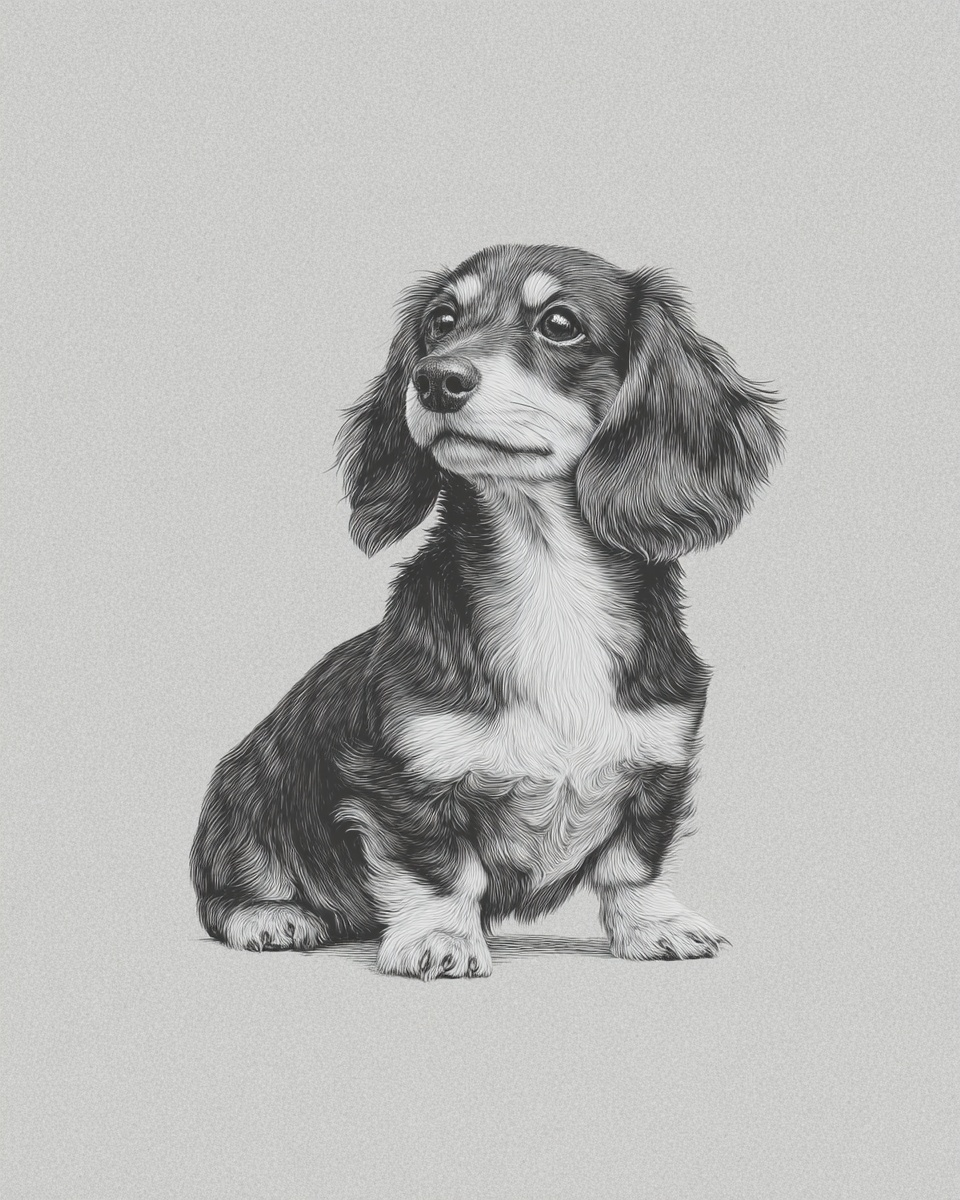Dachshund

Description
Dachshunds originated in 15th-century Germany, bred specifically for hunting badgers and other burrowing animals. Their long bodies and short legs allowed them to dig into dens and navigate tight underground spaces with ease. There are two main sizes—standard and miniature—and three coat types: smooth, wirehaired, and longhaired. Each coat type reflects different breeding influences, such as the smooth coat from Braque French Pointers and Pinschers, and the wirehaired from Dandie Dinmont Terriers. These dogs are bold and fearless, traits inherited from their hunting past. They tend to be stubborn and independent, which can make training a test of patience. Dachshunds are affectionate with their families but may show wariness toward strangers and other small pets. Their lively personality and unique silhouette make them a distinctive companion, but their strong prey drive means supervision around smaller animals is important.
Grooming
Smooth-coated Dachshunds shed lightly to moderately and require minimal maintenance compared to their wirehaired and longhaired counterparts. Weekly brushing with a rubber curry or bristle brush helps remove loose hair and keeps the coat shiny. Bathing every 4 to 8 weeks is sufficient; avoid over-bathing to protect natural oils. Nail trimming every 2 to 4 weeks prevents discomfort and potential injury, while monthly ear checks and cleanings reduce the risk of infections, especially since their ears are floppy. - Brush weekly with rubber curry or bristle brush - Bathe every 4–8 weeks - Trim nails every 2–4 weeks - Clean ears monthly - Check for skin folds and keep dry Pro tip: Use a damp cloth to wipe paws and folds after walks to prevent dirt buildup. Dachshunds with lighter cream or fawn coats may show tear stains more prominently, so gentle cleaning around the eyes is helpful.
Learn the Smooth routine:
→ Complete Smooth Grooming Guide
Walking
Dachshunds need about 40 minutes of walking daily, typically in one session. Their short legs mean they cover less ground, but they still benefit from consistent exercise to maintain muscle tone and prevent weight gain. Because they can be stubborn, keep walks engaging with varied routes and opportunities to sniff. Avoid overly strenuous activity or steep climbs to protect their long backs. Example routine: Morning: 40-minute walk around the neighborhood with sniff breaks. Evening: Short play session indoors or gentle leash walk. Keep walks steady and controlled.
Boarding
When boarding a Dachshund, provide a crate sized between 36 and 42 inches to accommodate their long body comfortably. They enjoy calm decompression time after exercise, so staff should allow for quiet rest periods following play. Dachshunds tend to be cautious with new people, so slow introductions by staff help reduce stress. Predictable routines with consistent feeding, walking, and rest times support their well-being. Their playstyle is moderate; they like gentle games and toys that stimulate their hunting instincts, such as scent puzzles or small fetch toys. Avoid roughhousing with larger dogs to prevent injury. Enrichment should focus on mental engagement and low-impact physical activity to protect their backs. Staff should monitor for barking, as Dachshunds can be vocal when anxious or bored.